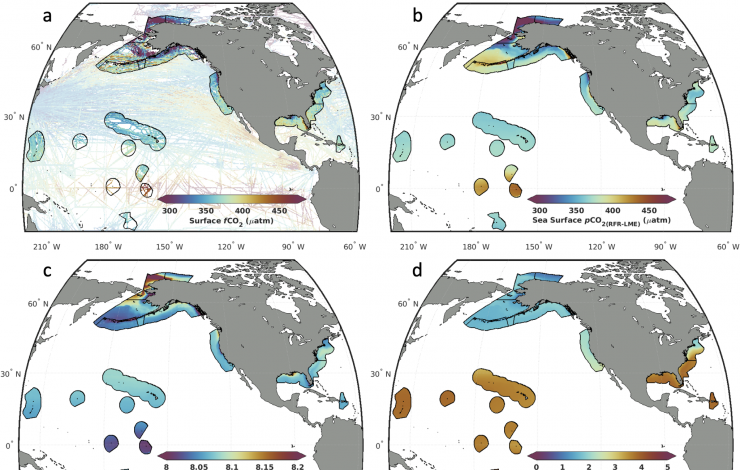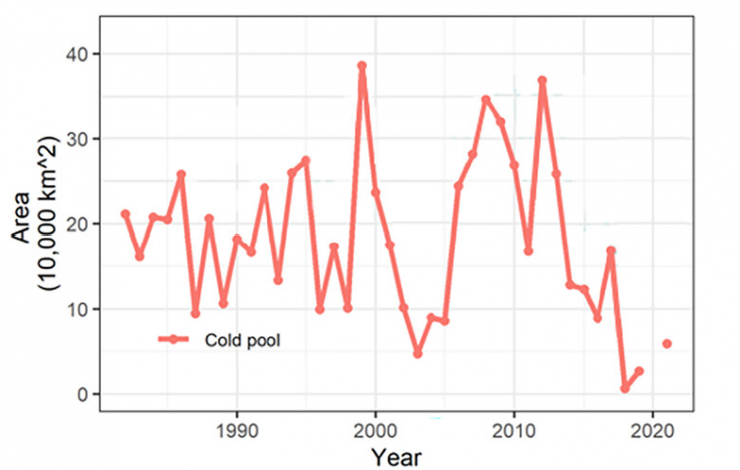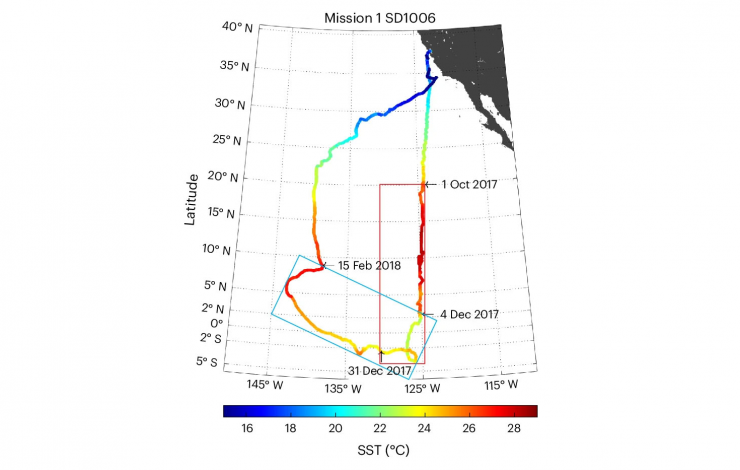Feature Publication Archive

Uncrewed Surface Vessels, like this Saildrone, offer a cost-effective way to greatly increase ocean observations. Credit: Saildrone.
Patterson, R.G., M.F. Cronin, S. Swart, J. Beja, J.M. Edholm, J. McKenna, J.B. Palter, A. Parker, C.I. Addey, W. Boone, P. Bhuyan, J.J.H. Buck, E.F. Burger, J. Burris, L. Camus, B. de Young, M. du Plessis, M. Flanigan, G.R. Foltz, S.T. Gille, L. Grare, J.E. Hanson, L.R. Hole, M.C. Honda, V. Hormann, C. Kohlman, N. Kosaka, C. Kuhn, L. Lenain, L. Looney, A. Marouchos, E.K. McGeorge, C.R. McMahon, S. Mitarai, C. Mordy, A. Nagano, S.-A. Nicholson, S. Nickford, K.M. O'Brien, D. Peddie, L. Ponsoni, V. Ramasco, N. Rozenauers, E. Siddle, C. Stienbarger, A.J. Sutton, N. Tada, J. Thomson, I. Ueki, L. Yu, C. Zhang, and D. Zhang (2025): Uncrewed surface vehicles in the Global Ocean Observing System: A new frontier for observing and monitoring at the air-sea interface. Front. Mar. Sci., 12, 1523585, doi: 10.3389/fmars.2025.1523585.
The global ocean covers 71% of the planet. Across these vast spaces, interactions between the ocean and atmosphere are primary drivers of Earth's weather, climate and marine productivity.
Satellites, instrumented moorings, and infrequent ship-borne research missions have revealed much about these interactions, but large areas of the ocean are significantly undersampled.
To fill in the gaps, scientists have increasingly turned to an array of Uncrewed Surface Vehicles (USV), some of which can navigate tens of thousands of kilometres to capture key observations autonomously.... more »

The Bay of Bengal, with the location of the instrumented buoy shown by the blue dot. Credit Sarah Battle, NOAA PMEL
McPhaden, M.J., K. Athulya, M.S. Girishkumar, and M. Orlic (2024): Ekman revisited: Surface currents to the left of the winds in the Northern Hemisphere. Sci. Adv., 10(46), eadr0282, doi: 10.1126/sciadv.adr0282.
Rare observations of surface currents to the left of winds in the Bay of Bengal
One of the foundational principles of modern oceanography is that ocean surface currents on our rotating planet will be deflected to the right of the winds in the Northern Hemisphere and to the left of the winds in the Southern Hemisphere.
While this principle, first explained by the Swedish oceanographer Vagn Walfrid Ekman in 1905, applies everywhere on Earth, there's more to the story, including a twist described in new research by an international team led by a scientist with NOAA's... more »

(a) Long-term averages (1998-2022) of surface ocean CO2 fugacity observations from SOCATv2023, binned into 0.25° × 0.25° monthly grid cells, which are used in the development of RFR-LMEs. (b-d) Long-term averages (1998-2022) of monthly RFR-LME maps of surface ocean (b) CO2 partial pressure, (c) pH on the total scale, and (d) calcium carbonate saturation state with respect to aragonite.
Sharp, J.D., L.-Q. Jiang, B.R. Carter, P.D. Lavin, H.L. Yoo, and S. Cross (2024): A mapped dataset of surface ocean acidification indicators in large marine ecosystems of the United States. Sci. Data, 11, 715, doi: 10.1038/s41597-024-03530-7.
Humans generate about 36 billion tons of carbon dioxide pollution every year, about 30 percent of which are absorbed by the oceans. While that means there's less carbon dioxide (CO2) heating the atmosphere, the result is that the chemistry of the ocean is changing in profound and damaging ways, especially for marine organisms that grow hard shells.
Now, scientists from NOAA and two cooperative institutes have developed spatially and temporally consistent maps of ocean acidification indicators covering U.S. large marine ecosystems (LME) from 1998 to 2022. The work was led... more »

History of the Bering Sea cold pool extent based on NOAA Fishery bottom trawl surveys (note there are no data in 2020). Credit: NOAA National Marine Fisheries Service
Overland, J.E., E. Siddon, G. Sheffield, T. Ballinger, and C. Szuwalski (2024): Transformative ecological and human impacts from climate change and diminished sea ice in the northern Bering Sea. Wea. Climate Soc., 16(2), 303–313, doi: 10.1175/WCAS-D-23-0029.1, View open access article at AMS.
Unprecedentedly low sea ice cover in the northern Bering and Chukchi seas during back-to-back winters from 2018 to 2019 caused a cascade of impacts that abruptly transformed the regional marine ecosystem, compounding challenges faced by the communities that rely on it.
A new paper authored by scientists from NOAA Research, NOAA Fisheries and the University of Alaska examined how the loss of sea ice delivered an... more »

TPOS 2017 mission. Saildrone #1006 (SD1006) track, coloured by SST measured at 0.6 m.
Cronin, M.F., D. Zhang, S.M. Wills, J.E. Reeves Eyre, L.-A. Thompson, and N. Anderson (2024): Diurnal warming rectification in the tropical Pacific linked to sea surface temperature front. Nature Geosci., doi: 10.1038/s41561-024-01391-8, View open access article at Nature Publishing (external link).
Over the past 20 years, researchers have been studying how the atmosphere reacts to changing ocean temperatures globally, sparking debates on the exact mechanisms at play.
Using advanced tools like uncrewed surface vehicles (USVs), moored ocean buoys, and satellite data, a new study published in Nature Geoscience investigates how changes in ocean surface temperature affect our atmosphere's stability and movement. Focusing on the eastern Pacific Ocean near the equator, this work uncovers... more »


